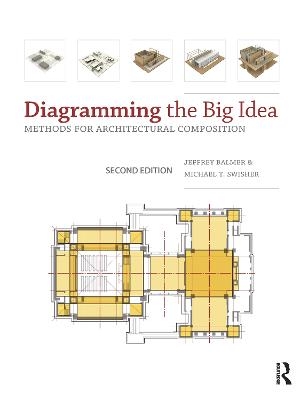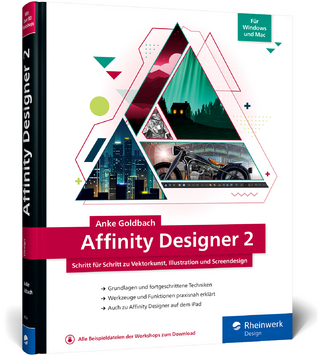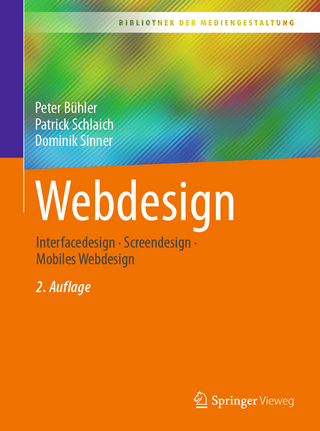
Diagramming the Big Idea
Routledge (Verlag)
978-1-138-54989-0 (ISBN)
Becoming an architect is a daunting task. Beyond the acquisition of new skills and procedures, beginning designers face an entirely unfamiliar mode of knowledge: design thinking.
In Diagramming the Big Idea, Jeffrey Balmer and Michael T. Swisher introduce the fundamentals of design thinking by illustrating how architects make and use diagrams to clarify their understanding of both specific architectural projects and universal principles of form and order. With accessible, step-by-step procedures that interweave diagrams, drawings and virtual models, the authors demonstrate how to compose clear and revealing diagrams.
Design thinking defines a method for engaging the world through observation and analysis. Beyond problem solving, design is a search for possibilities. Mastering design thinking begins with learning the fundamentals of visual composition. It embraces the ability to synthesize deductive and imaginative reasoning, combining both shrewd scrutiny and fevered speculation.
Design diagrams make visible the abstractions that order the built environment. Premised upon the Beaux-Arts notion of the architectural parti, Balmer and Swisher adopt the ‘Big Idea’ as a foil and as a suitcase to organize fundamentals of architectural composition. The goal of this book is to make explicit to students what they are learning, why they are learning it and how to internalize such lessons toward their lifelong development as designers.
Jeffrey Balmer and Michael T. Swisher are associate professors of architecture at the University of North Carolina at Charlotte.
Part I: Setting the Stage
1. Introduction
Read me first!
Why read this book?
What is architecture?
Organization, order, composition
Utility, function, purpose
Measure & matter
Design & method
Strategies & tactics
The structure of the narrative
The sequence of the chapters
The role of precedents
The point of departure
Glossary of terms
Details 1 - Order & Measure
From the divine to the secular
Demonstration 1.1
Organizational figures
Demonstration 1.2
The courtyard schema
Demonstration 1.3
Courtyards as objects
Demonstration 1.4
Additional courtyard schemata
2. Sorting through ideas
Diagrams as method
Diagram types
Diagramming & design education
Learning diagrammatic form
Gestalt sub–categories
The diagram & visual order
Our purpose
Glossary of terms
Details 2 Indigenous diagrams
Demonstration 2.1 Diagrams & contexts
Demonstration 2.2 Plan as diagram
3. Order First
On order
On measure
Dividing the square
Rules of engagement
Positive & negative space
Order & the orthogonal
Glossary of terms
Details 3 - Order, Orientation, Orthogonal The gridded city
Demonstration 3.1 Gestalt defined
Demonstration 3.2 Gestalt readings of basic form
Part II: The First Project Set
4. Design & drawing fundamentals
On drawing
Relevance to design
Deriving order in drawing
Exercises in relational geometry
Defined & implied space
Analyzing the composition
Three variant compositions
Observing contrast, repetition, alignment & proximity
The variations considered
General observations
Motif, pattern & theme
Defined fields
Sorting through results
Implied fields
Adding fields
Combining fields
Summary
Glossary of terms
Details 4 - The Courtyard Figure–ground & solid–void
Demonstration 4.1.1 Figures & field in variation
Demonstration 4.1.2 Variation & elaborations
Demonstration 4.1.3 Variation & elaborations
Demonstration 4.2 Further variations
Demonstration 4.3 Contrast, repetition, alignment & proximity
The second project set
5. Building on proportion
Object on a field
A figure in the relational field
Looking at the groups
Selecting & analyzing an aggregate composition
Adding to the quadrants
Two elements
Refining the figures
Observing the new figures
Observing the new group
Glossary of terms
Details 5 - Figures & Fields Objects & space
Demonstration 5.1 Regulating lines dividing space
Demonstration 5.2 Figures & their construction
Demonstration 5.3 Field, grain & path
6. Conventionos in Design
Drawing in the third dimension
Adding fields & overhead planes
Turning the grid
Reading the section
A final model
Glossary of terms
Details 6 - Axis & Path Lines, planes & volumes
Part III: The third project set
7. Starting in three dimensions
Design on a grid
The site
Three figures
Spatial models
Volume, form & space: an example
Visualizing connection with constructed axes
The gestural nexus
Spatial hierarchy: field grain & path
Clarifying plan elements
The new grid
Strategy set
Tactical definitions & variations
A final remark
Glossary of terms
Details 7 - Spatial Systems Frames, planes & cells
Demonstration 7.1 Axial volumes
Demonstration 7.2 Additional composition models
8. Models & diagrams
More complex approaches to strategies
Strategy definitions
Tactical themes & variations
Tactics expanded – procedure & results
Three–dimensional diagrams
Combined diagram models
Planning the final model
Fragments models
The final model
Conclusion
Glossary of terms
Details 8 - Treshold & Boundary Containment & connection
Demonstration 8.1 Axial volumes
Demonstration 8.2.1 Alternate tactical diagrams
Demonstration 8.2.2 Additional hybrid tactical diagrams
Demonstration 8.3 Demonstration model
Demonstration 8.4 Demonstration drawings
Demonstration 8.5.1 Assembly images
Demonstration 8.5.2 Alternate model #1
Demonstration 8.5.3 Alternate model #2
Part IV: Precedents
9. Precedent diagrams in two dimensions
Introduction
Two concepts
Two expressions
Two dimensions
Two projects
House with Three Courts
The Danteum
Glossary of terms
Details 9 - What an Architect Sees Margaret Esherick house
10. Precedent diagrams in three dimensionos
Introduction
Representing the third dimension
Phillips Exeter Academy Library
Unity Temple
Diagram as generator
Glossary of terms
Details 10 - The Language of ColorColor as a subject
Glossary of color terms
Part V: Resources
Master glossary of terms
Index
| Erscheinungsdatum | 12.02.2019 |
|---|---|
| Verlagsort | London |
| Sprache | englisch |
| Maße | 210 x 280 mm |
| Gewicht | 1383 g |
| Themenwelt | Kunst / Musik / Theater ► Design / Innenarchitektur / Mode |
| Mathematik / Informatik ► Informatik ► Grafik / Design | |
| Naturwissenschaften ► Geowissenschaften ► Geografie / Kartografie | |
| Technik ► Architektur | |
| ISBN-10 | 1-138-54989-4 / 1138549894 |
| ISBN-13 | 978-1-138-54989-0 / 9781138549890 |
| Zustand | Neuware |
| Informationen gemäß Produktsicherheitsverordnung (GPSR) | |
| Haben Sie eine Frage zum Produkt? |
aus dem Bereich


